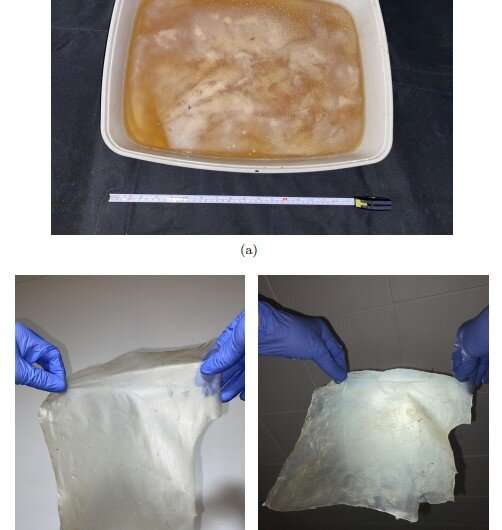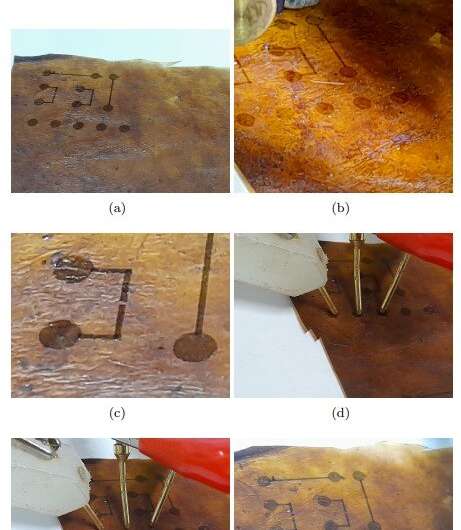February 23, 2023 report
This article has been reviewed according to Science X's editorial process and policies. Editors have highlighted the following attributes while ensuring the content's credibility:
fact-checked
preprint
trusted source
proofread
Testing the use of kombucha to make circuit boards

A small international team of material and computer engineers has tested the possibility of using kombucha to make electronic circuit boards. Their paper, posted on the arXiv pre-print server, describes various methods of printing circuitry onto the dried mats.
Kombucha is a type of tea consumed by people around the world. It is made by adding a symbiotic culture of bacteria and yeast (SCOBY) to a container holding sugar water and flavorings and letting it brew for a couple of weeks. It is unique in that making a container of tea results in the creation of a second SCOBY—similar in some respects to the way that sourdough bread is made using a "starter."
The SCOBY used to make kombucha looks like a dead sea creature and has uses besides making tea. It is a mass of cellulose fiber, which makes it pliable. Some in the past have found that if dried, the mat that results can be used to make a kind of fabric. The research team had previously found that the mats could be also used to create what they describe as living kombucha mats that are capable of conducting electricity. For the new study, they wondered if the mats could be dried and used as the backing for circuit boards in functional, wearable devices.
To test this possibility, the team purchased several samples of kombucha and used them to grow their own SCOBY mats. Each of the mats were then air dried and tested in several ways. One of the initial tests was to determine if the mats would hold together in a way that would allow their use as a circuit backing material. The team found that they were more than robust, and in fact, would retain their shape when heated to temperatures as high as 200 degrees Celsius.

Satisfied that they were on to something, the team then tried printing circuits onto the mats using conductive polymers via an aerosol jet printer. They also tested them using a 3D printer. They found both approaches worked as they hoped. They found that they could even attach LEDs to the circuit boards and they would light up. They conclude that while more testing is required, it appears that kombucha mats are a viable option for creating wearable electronic devices.
More information: Andrew Adamatzky et al, Kombucha electronics, arXiv (2023). DOI: 10.48550/arxiv.2302.03984
© 2023 Science X Network




















